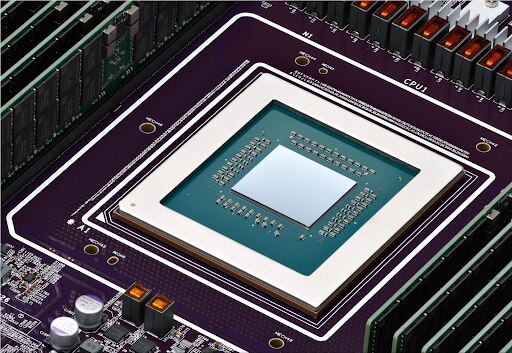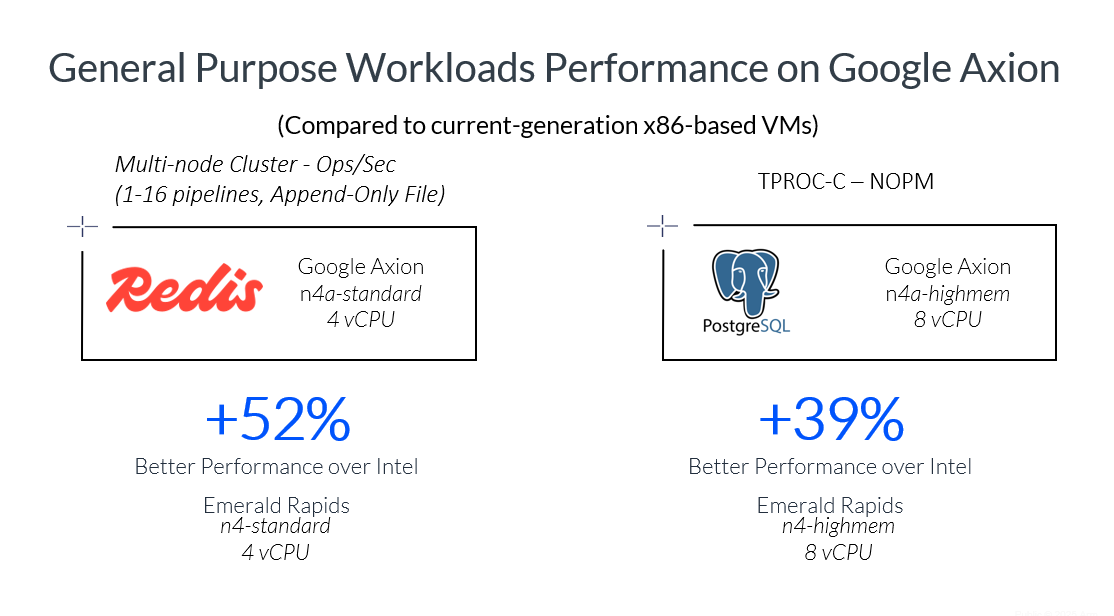Arm propels cloud-to-car development in new Google Axion-based instances

AI is reshaping everything from recommendation engines to language models, but beneath the surface lies a pressing challenge: energy efficiency. As AI adoption scales, so does the power required to run it. The result is a growing strain on cloud infrastructure, especially in the converged AI data center, where traditional and AI workloads now run side by side.
In this new paradigm, CPUs are more critical than ever. Across the backbone of the entire infrastructure, they power the majority of cloud services, from data pipelines to web front ends, orchestration layers, and inference engines. Modern CPUs must deliver optimum performance, maintain energy efficiency, and provide a lower total cost of ownership (TCO), while handling general-purpose compute workloads at an ever growing scale.
This is exactly where the Arm Neoverse platform shines. Neoverse CPUs are architected specifically for cloud-scale deployments, offering leading performance-per-watt, near linear scalability, and support for diverse workload profiles without requiring specialized tuning.
Google and Arm: Expanding our collaboration to better address customer needs
Google, in collaboration with Arm, has been designing its Axion family of custom silicon CPUs tuned for real-world performance. C4A, Google’s first virtual machine (VM) with Arm Neoverse-based CPU, already delivers outstanding performance, easily outperforming x86 VMs.
Today, Google announced a preview of its second Arm-based VM running on Axion CPUs. Built on the Neoverse platform, N4A is the most cost-effective N-series VM on Google Cloud to date, delivering industry-leading price-performance and performance-per-watt for general purpose and AI-adjacent workloads, including cloud applications, data preparation and web serving jobs. It’s also a powerful example of how optimizing CPU designs on Arm’s compute platform directly translates into scalable, efficient, and future-ready cloud services, such as Google Kubernetes Engine (GKE) and Compute engine.
Early testing shows up to 105% better price performance and 80% higher performance-per-watt compared to comparable x86 VMs, making N4A a compelling choice for efficiency-conscious deployments. And these performance gains aren’t theoretical, as shown in the results of our own performance testing of N4A VMs.

On two foundational cloud services, Redis – which powers fast in-memory caching and real-time analytics – and PostgreSQL – which underpins transactional systems across e-commerce, financial services, and web platforms – we have measured up to 52% and 39% better performance, respectively, on N4A compared to current-generation x86 N4 VMs.
A preview of Google’s Axion-powered N4A VMs is available now. For developers, it’s a chance to run real-world workloads and experience the performance of a next-gen Arm-based platform firsthand. Sign up for early access here.
Also, today Google announced a preview of C4A metal, the first bare-metal Arm-based instance on Google Cloud designed for specialized workloads that require direct access to physical hardware, such as in-vehicle infotainment (IVI) or advanced driver assistance systems (ADAS) applications in the car. For developers, this means running the same code without needing to re-write or re-optimize software for each type of chip, regardless of whether that chip sits in the cloud or in the vehicle. This ultimately reduces development cost, accelerates time-to-market and improves the reliability of applications that can all be run on Axion-powered silicon.
Together, these Neoverse-powered Google Axion machine types allow customers to right-size infrastructure to their needs, without switching architectures or compromising on performance. The expanded portfolio also unlocks new options for optimizing TCO, reducing the energy footprint, and improving workload responsiveness across diverse deployment needs. More details about Google Cloud’s expanded Neoverse-based portfolio can be found here.
Google’s multi-architecture momentum: Scaling critical workloads on Arm
Google is strategically migrating critical infrastructure workloads to Arm, reshaping how large-scale services are built and deployed. Today, major Google applications, including Gmail and YouTube, run on Arm and x86 simultaneously, and more than 30,000 internal applications have already been migrated to Arm-based systems.
Importantly, this transition didn’t require massive code rewrites. Thanks to modern compilers and build systems, most architectural differences are handled automatically at compile time, highlighting the maturity and readiness of today’s Arm software ecosystem. This means Google’s teams can focus more time optimizing the DevOps layer, and updating tests, workflows, and deployment systems to support a multi-architecture-aware pipeline.
For any organization considering a similar migration, the transition to an Arm-based infrastructure offers a practical, efficient, and production-ready environment, with ecosystem support that allows developers to maintain velocity without compromise.
Built for developers and enterprises: A ready ecosystem and immediate gains
In the current multi-architecture cloud landscape, flexibility is strategic. By building on Arm, Google extends workload-optimized silicon capabilities to its cloud customers, enabling them to fine-tune for performance, energy efficiency, cost, and agility across a broad range of applications and cloud services.
Since all Axion-based instances run on the same Neoverse foundation customers have direct access to Arm’s mature cloud-native software ecosystem that supports modern container orchestration, observability, CI/CD pipelines, and AI/ML frameworks, among others. Combined with Google’s developer tooling, it enables faster builds, smarter scaling, and better economics.
To further accelerate the adoption of Google Axion platforms, enterprise customers can access the Arm Cloud Migration program that provides hands-on expertise, migration tools and best practices that organizations can leverage to achieve lower costs, improved performance, and meet greater sustainability objectives in the cloud.
Any re-use permitted for informational and non-commercial or personal use only.












